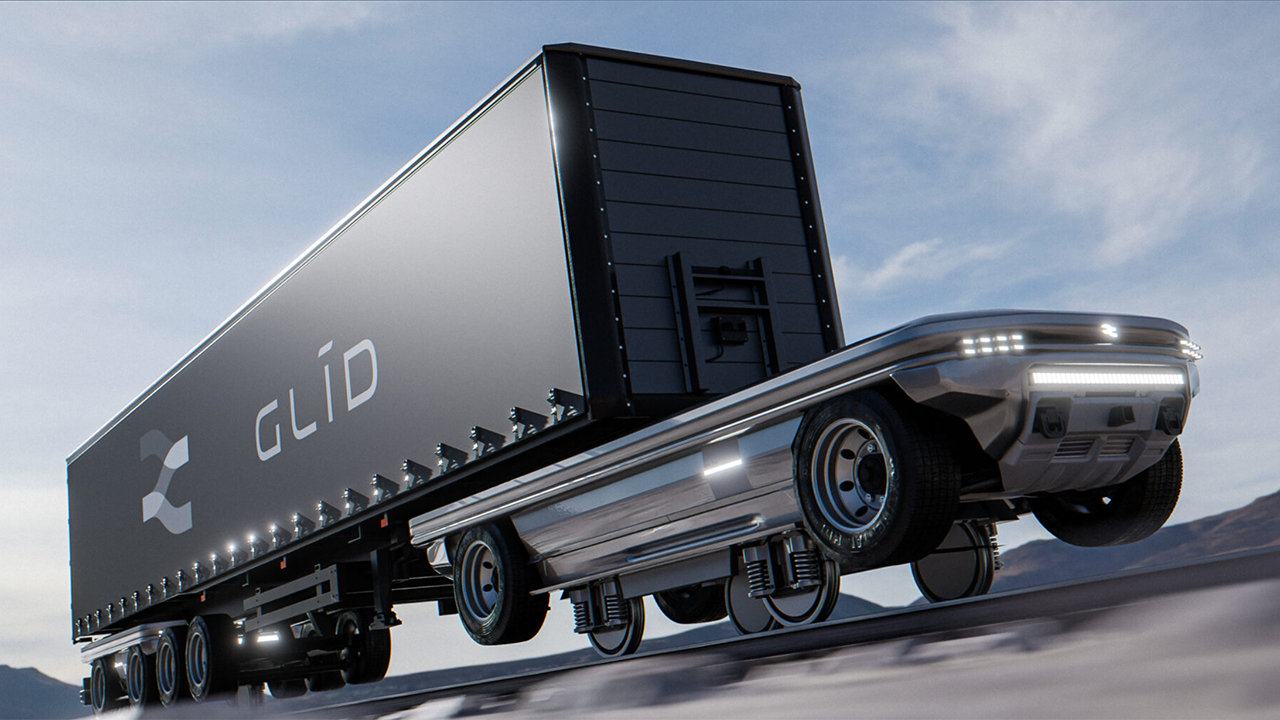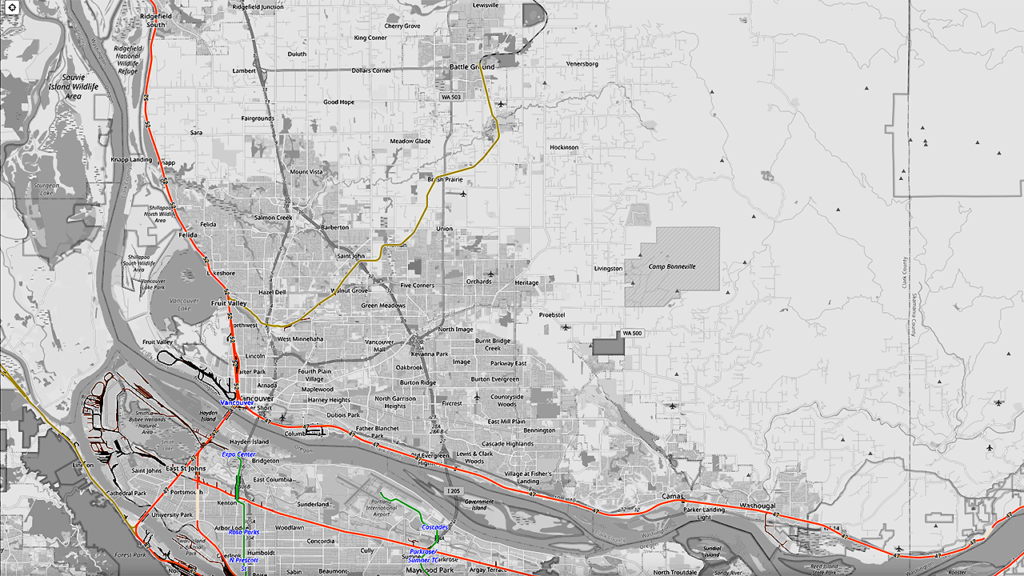
PVJR, GEGI Partner on Autonomous Road/Rail Glīd (Updated May 5)
Written by William C. Vantuono, Editor-in-Chief
Portland Vancouver Junction Railroad (PVJR), a 33-mile Class III in Washington State, has entered a partnership with Salt Lake City-based tech startup Genesis Electronics Group Inc. (GEGI) to provide rail access to the company’s experimental autonomous battery-electric Glīd road/rail vehicle. Vancouver, Wash.-based trucking transportation and logistics company Taylor Transport is a participant in Glīd testing.
On May 5, GEGI announced that it has signed the last subscription agreement for $190,000 from Strategic Investor, 40 Brightwater, LLC, which closes out the current Reg A offering. Due to the size of the investment, these shares will be restricted as per Rule 144.
“This new Investor believes in the vision and mission of the company and has provided this cash infusion as a sign of their confidence and support for the company and Its future,” Kevin Damoa, CEO of Genesis Electronics Group commented. “This investment by Shannon Newby and 40 Brightwater LLC couldn’t come at a more important time for not only our Glīd technology, but also our nation’s decision to transition rapidly into a greener and more sustainable future. We are extremely grateful for his belief and support and we look forward to building a brighter tomorrow together for intermodal transportation.”
Shannon Newby, CEO of 40 Brightwater, LLC commented, “We have been following Genesis Electronics Group and their Glīd technology for several months. We are impressed by their technology and the team they have assembled in their effort to decarbonize freight transport in America. We look forward to seeing how we can provide greater strategic value to the company in the future.”
The Glīd is described as a vehicle “for moving unaltered semi-trailers on and off the rails.” Taylor Transport’s property has a rail spur directly connecting to the PVJR. GEGI signed a letter of intent with Taylor Transport in early April 2023. In October 2022, GEGI acquired Glīd, LLC, a Salt Lake City-based autonomous electric shipping technology firm.
Glīd is a wholly owned subsidiary of GEGI. Its technology is designed to enable “two specially made ‘Glīder’ vehicles to independently and autonomously move under an unaltered, fully loaded semi-trailer, connect to both the kingpin and rear axle, and then lift the trailer,” GEGI described. “Once the trailer is lifted off the ground, the Glīders, using a uniquely designed wheel system, will be able to access railroad tracks, deploy rail wheels [much like a hi-rail vehicle], and then transport the semi-trailer at speeds of up to 80 mph on battery power. Each Glīder would exit the rails onto a [facility] where a semi-tractor could then pick up the trailer and take it on the final leg of its destination.”
The PVJR/GEGI partnership is described as “the first in the U.S. to grant access to an autonomous electric vehicle to move unaltered semi-trailers on and off the rails.”
Glīd equipment and software can be resting while on the PVJR rail spur in Taylor Transport’s facilities. “Engineers will be able to test, observe and perform the necessary design and onsite modifications required to iterate and enhance its beta units for production deployment,” GEGI noted. “After certain testing standards have been met, the Glīd will be able to access longer stretches of PVJR track and begin to interface with its scheduling system as well as [determine compliance with FRA] safety standards. Meeting or exceeding [FRA] rail safety standards and system requirements is one of the highest priorities. The company wants to demonstrate that autonomous vehicles on the rails can be as safe if not safer than [crewed] locomotives. Working with PVJR will enable us to evaluate safety protocols in several environments and scenarios. Once the Glīd can demonstrate that it has passed these safety standards, we will have the opportunity to present this technology to other rail operators across the country, including Class I railroads.”

PVJR leases 33 miles of railroad from Clark County, Wash. between Vancouver and Chelatchie. Its interchange with BNSF (on BNSF’s Seattle Subdivision) is four miles north of Portland, Ore. in Vancouver, a short distance away from the Port of Portland and Port of Vancouver. The railroad also has access to I-5 and I-205.

GEGI said its growth plans could include expanding Glīd’s manufacturing, testing and regional operations centers to Brush Prairie, Clark County, Wash. or the surrounding areas. “We anticipate these facilities will bring jobs to the local community to support the county,” the company said. “Glīd hopes to secure local, state and federal grants in an aggressive buildout of these facilities as it partners with the county and local business such as Taylor Transport and PVJR. GEGI plans on owning and operating each Glīder in its fleet and providing a ‘Glīder-as-a-Service’ business model.”
“The importance of this partnership cannot be put into words,” commented Kevin Damoa, CEO of GEGI and Glīd. Since we founded Glīd, we have been met with a stream of doubtful dialogue with statements that included our inability to gain access to rail, and that there wasn’t a rail operator that would permit it. We are grateful to PVJR President Eric Temple and COO Nathan Bruce, who have been extremely supportive and enthusiastic about our technology and business plans to decarbonize rail for the communities that they service. Like the Leboki family of Taylor Transport, Eric Temple desired PVJR to be the first railroad in the U.S. to be able to offer this technology. His commitment to decreasing carbon emissions and improve the environment serves as an example to Clark County and other railroad operators in the U.S.”
“We are pleased to be the first rail partner for Glīd technology,” said Temple. “We have prided ourselves as a strategic member of Clark County and the surrounding community and have committed to creating jobs, making our rails safer, and reducing the carbon footprint. The railroad industry has been the leading edge of efficient land-based transportation for more than a century, and with this technology, we can take it to the next level.”


![Balsa 91 transits the Fort McHenry Channel [Key Bridge Response 2024 Unified Command photo by U.S. Army Corps of Engineers Visual Information Specialist Christopher Rosario]](https://www.railwayage.com/wp-content/uploads/2024/04/Balsa91-315x168.jpg)
